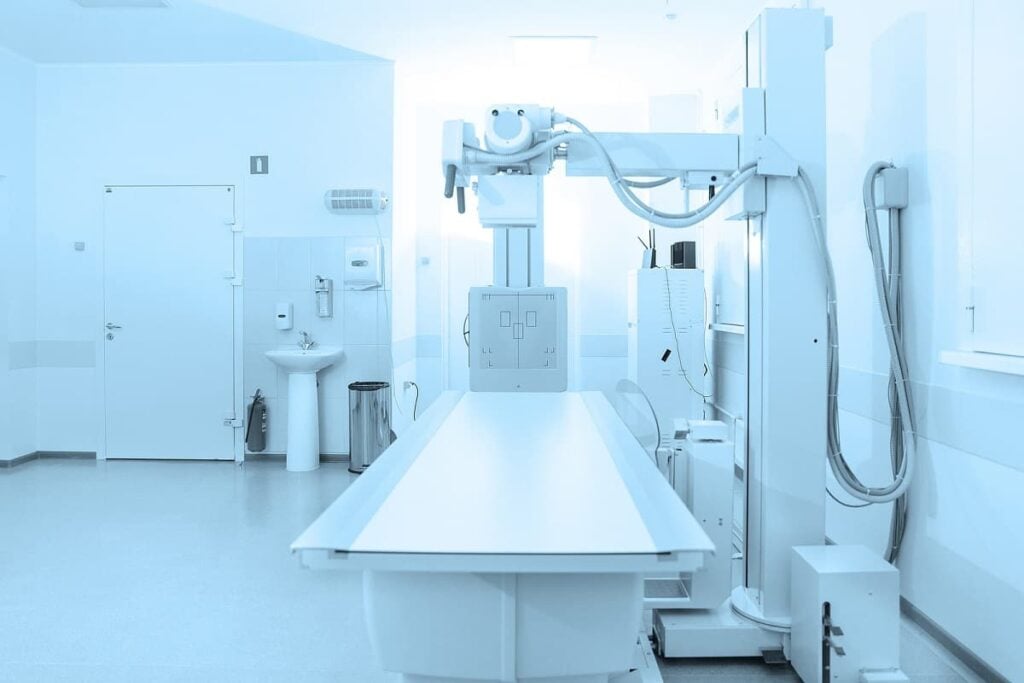Merantix: Incubating AI Ideas Into AI Startups
Table of contents

We’ve been researching and writing about disruptive technologies for over a decade now, and every day our inbox fills up with all kinds of emails. While most inquiries come from PR firms and link whores, the remainder runs the gamut: from Catherine in Texas who wants us to help her rent a car, to the schizophrenics that email us about the voices they keep hearing. As you would expect, we also get a fair number of what salespeople call “leads.” These represent companies that are looking to solve a problem using AI but don’t know where to start – like the large tire company in Chicago that asked us for a computer vision algorithm that could read and record five attributes off tires while they traversed down a conveyor belt, something that’s currently performed by humans.
Just last week, a large Middle Eastern waste company caught wind of our recent visit to the Kingdom of Saudi Arabia and asked us for “a system that can detect the waste and its types through the camera placed on the top of the waste collection trucks.” Loose requirement, but interesting. Sounds similar to what Sadako is doing in Barcelona. In short, we have a steady source of ideas for AI use cases, but don’t know if they’re useful. You know what they say. Ideas are like dysfunctional family members – everyone has at least one. To learn more about how ideas get turned into billion-dollar startups, we sent one of our MBAs over to Berlin to speak with Adrian Locher, a Swiss serial entrepreneur and investor who has founded more than 10 companies. His latest creation is a firm that incubates early-stage artificial intelligence startups – Merantix.
About Merantix
Founded in 2016, the Berlin-based venture studio Merantix has taken in $37.5 million in funding so far to develop a pioneering platform for commercializing AI in industry. Merantix has partnered with world-renowned academic institutions to translate leading research in machine learning into products that will transform existing industries and create new ones.
Unlike most venture capital firms, Merantix doesn’t invest in existing companies. Instead, they focus on “identifying the most promising ideas, matching the perfect teams, and finding and executing a winning strategy.” “We’re like a VC turned upside down,” said Mr. Locher. Most VCs spread their bets across a large number of constituents, weeding out the losers and doubling down on the winners. Merantix tries to pick the winners up front. When nine out of ten startups fail, picking winners at the earliest stage will work magic on your returns. So, how do they do this?
The Merantix Method
Mr. Locher, along with his co-founder Rasmus Rothe, are the gatekeepers at Merantix. During the first month an entrepreneur spends at the venture studio, they’re being vetted by both of them. Once accepted into the fold, entrepreneurs work through a portfolio of ideas so that they’re able to identify the best fitting idea to move forward with. This approach helps the founder choose what they’ll be best at while helping Merantix run leaner. If any one idea has a delay during the critical path, the team simply switches their focus until the delay is rectified. The entire method of turning a great idea into a great startup looks like this:

With a formidable staff of in-house experts in machine learning and data sciences, as well as connections to industry leaders, Merantix is well suited to vet the 700-800 ideas in their pipeline and quickly identify the ones with promise using a maniacal focus on product-market fit. (They’re currently moving forward with about 15-20 of the ideas in their pipeline.) Once a winning idea has been found, Merantix then assembles high-performing teams that consist of engineers, business people, and subject matter experts.
To ensure this, only the best talent makes its way into Merantix. For every 50 candidates they vet, they’ll make one hire. The criteria are simple – equal parts IQ and EQ – and you better rank extremely high in both. Once you get in the door, you’ll love working there. At least that’s what their 97% retention rate implies. As for funding, Merantix invests one to three million euros in pre-seed and seed for about two startups a year with founding teams maintaining the majority of equity. A Series A funding round usually coincides with a startup leaving the Merantix household and venturing off on their own. Before that though, they need to be absolutely sure that what they’ve built is what customers need. That’s where Merantix Labs comes into play.
Merantix Labs

The types of solutions that generate exponential values will do so in ecosystems like those found in large corporations. Merantix Labs works with some of Europe’s biggest corporations like Bosch, Airbus, Continental, and Volkswagen. Projects range from finding defects in engines for earth-moving machines to determining how much empty space is available in shipping containers. Once a concept has been proven, it may eventually manifest itself as a startup that emerges from Merantix to venture forth on its own – like Vara Healthcare.
Vara Healthcare
Vara Healthcare is one of the companies that’s flown the Merantix coop to venture off on their own. They’re just now achieving the valued traction that usually accompanies a Series A funding round. As we were chatting with Mr. Locher, his team was rolling out the Vara solution to a dozen customers across 4-5 European countries following regulatory approval. What the company has developed is an end-to-end workflow that starts from when a medical image is taken and ends when a diagnosis has been made. It’s still about keeping the human expert in the loop. While for 50% of the cases, reports are created automatically, the other half is still read by an expert radiologist.
We’ve seen companies like Zebra or Australia’s Volpara Health which are trying to solve similar problems. Vara is different in that they don’t deliver an algorithm to detect cancer for a single part of the workflow. Instead, Vara captures the entire workflow – from image storage to search – with the end goal being the collection of data that can then be used to further improve the 2-million-patient medical imaging dataset they’ve accumulated thus far by collaborating with over 15 research institutions. Below you can see the viewer where the radiologists can report their observations directly on the medical image.

As we learned at last year’s medical imaging conference at Stanford, medical imaging data has been historically difficult to aggregate, annotate, and share – privacy concerns and all that. When you’re an AI startup, it’s all about getting your hands on the best data to feed your hungry machine learning algorithms. That same data-first approach is being taken by the third startup to have flown the Merantix nest – SiaSearch.
Update 06/03/2020: Vara has raised $7 million in Series A funding to further expand in Europe and develop new uses for the company’s data stores. This brings the company’s total funding to $7 million to date.
SiaSearch
SiaSearch has developed “the first search and management platform for ADAS and autonomous driving sensor data.” Most major automotive companies are working on some form of autonomous driving, and one of the biggest challenges they face is trying to manage the amount of data that’s being collected. (Most organizations use less than 5% of what they collect.) A Medium post by co-founder Mark Pfeiffer talks about how a single vehicle with a typical sensor setup of cameras, radars, IMU, GPS, and potentially LiDAR, will record data at a rate of between 1-10 terabytes per hour of driving. If 20 vehicles are deployed, that translates to around 1 petabyte of new data being recorded every single week. (One petabyte is about 3.4 years of 24/7 Full HD video recording.) Even if only half that data was stored permanently, storage costs run into the millions per year. Since it’s early days in the regulatory environment, companies typically want to store more data than less. More importantly, they want to be able to search that data as needed. That’s where SiaSearch comes in:

As of today, understanding the content of the sensor data relies heavily on manual labor (in-car tagging with a tablet application or post-collection manual review of the data). This can easily eat up more than 50% of an engineer’s working time, which in turn leads to the low data utilization rates we observe today. Using distributed processing, SiaSearch can operate around 25x faster than real-time, meaning they can process and automatically tag one hour of driving in under 3 minutes. This processing will add context with more than 50 semantic descriptors. Now, if an engineer is interested in unprotected left turns at night, during rain, at a crowded intersection with many surrounding pedestrians, they can use an interface to search for all those instances. Furthermore, SiaSearch provides intelligent tools to make suggestions which data is most relevant based on the semantics. Instead of spending millions of dollars storing petabytes of driving data, companies can only store what they actually plan to use.
Conclusion
Merantix looks to apply machine learning to industries where AI will be a key driver in transforming them so they’ll be unrecognizable in twenty years’ time. Any use case where you have complex decision-making being performed solely by human experts is ripe for some AI transformation. All this negative publicity around replacing people with machines – the automation paradigm as Mr. Locher calls it – fails to acknowledge the accuracy paradigm. For example, the number of mistakes made by healthcare providers is astonishing, and by solving for this, you remove plenty of inefficiencies and save lives at the same time.
Mr. Locher thinks we’re on the cusp of a decline in machine learning popularity as we approach “the peak of inflated expectations” for artificial intelligence. He also thinks that company building in deep tech isn’t scalable. In order to solve big problems with the world’s most talented people, you need to keep focused and create as many synergies as possible to decrease time-to-market. You also need to make sure the problems you’re solving are making the world a better place. After a successful career spent as a serial entrepreneur, the only thing keeping Mr. Locher away from spending all his time at home with the family is the legacy he can leave by building more companies that make the world a better place. At Merantix, they believe you can do well by doing good. And that appears to be the trajectory they’re on.
Sign up to our newsletter to get more of our great research delivered straight to your inbox!
Nanalyze Weekly includes useful insights written by our team of underpaid MBAs, research on new disruptive technology stocks flying under the radar, and summaries of our recent research. Always 100% free.














